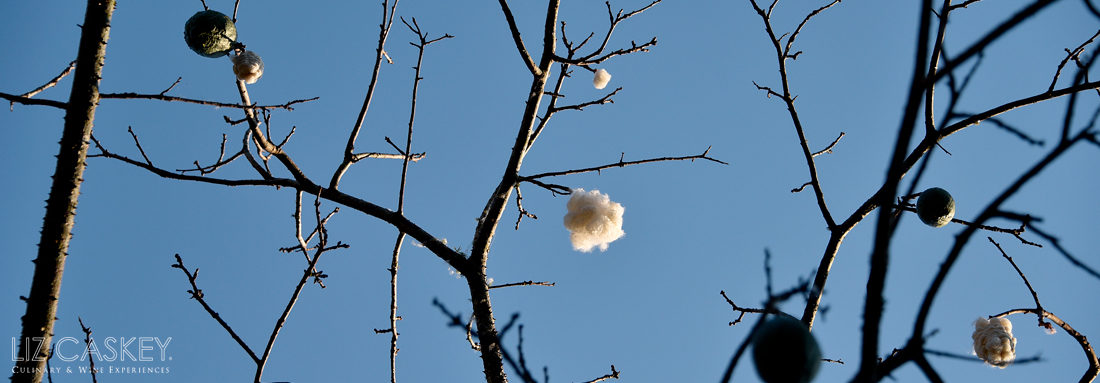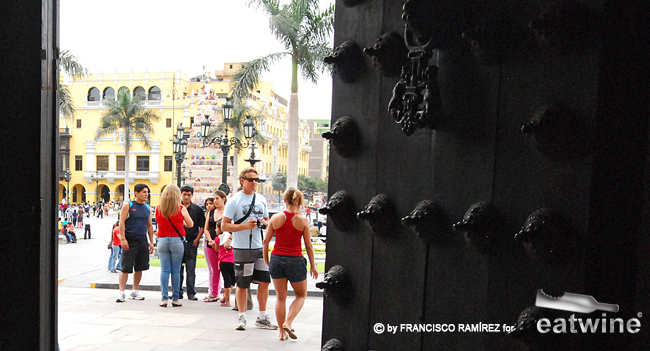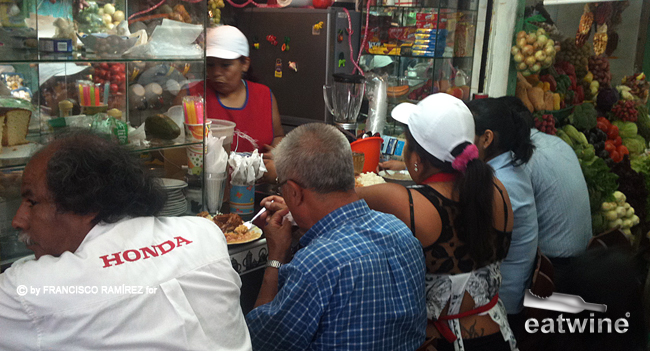This past weekend I finally saw the movie, The Girl with the Dragon Tattoo. I had been holding out until I finished, and digested, the book. It’s been a while since I have read a novel that has captivated my imagination so vividly. The main character, Lisbeth Salander, is so intriguing and the plot is so twisted, I couldn’t put it down (I am now half way through the second book, The Girl that Kicked the Hornet’s Nest). That being said, I am glad I saw the movie after the book. It deviated from the book in several instances and the ending was slightly changed. However, the casting was phenomenal, the imagery of Sweden really brought the story to life, and it ended up being less graphic than what I had expected. After being a non-fiction reader for so long, I am back into the world of novels.
On totally different another note, Peru has me super excited about its culinary scene. It is truly on the up and gaining momentum. In fact, the first dates for our Signature Journeys in Peru this June are already filled. We have just opened dates for next year, June 22-29, 2013. The Wall Street Journal proclaimed Peru the “Next Big Thing” in food for 2012. Certainly, its cuisine is on the lips of every top chef in the world at this moment. Why? Vibrancy, freshness, and diverse flavors. It is a cuisine that is driven by its regions while also expressing five centuries of Spanish, West African, Japanese, Chinese, and the indigenous influence.
With 84 microclimates, from the Pacific Ocean to Amazon, desert, Andes Mountains, and Altiplano, just about everything grows somewhere in Peru: rice, coffee, cocoa beans, quinoa, thousands of tubers, tropical fruit, organic vegetables, chilies, grapes for the brandy Pisco, and more. The cuisine’s key ingredients are the floral, piquant Chile called Ají Amarillo (yellow chili), perhaps the soul of Peruvian dishes, along with the tongue-tingling rocoto pepper slivered on ceviche .
Peru is also a nation of foodies from humble huariques (joints) to ceviche stalls to top restaurants. Peruvians love food, know how to cook, and have an opinion about it. They see it as a fundamental part of their national identity, regional pride, and a common denominator that all share. Look at the success of Mistura, one of the largest food festivals in the world that takes place in Lima every September.
One of the trends that separates Peruvian food from its other Latin cousins, particularly in the capital of Lima, is the hefty Asian immigration that left a stamp on the country in the late 1800s. The immigrants brought their vision of cooking with stir-frying, dumplings, skewers, raw seafood dishes, sushi rolls with toppings, and fused them with the local ingredients on hand. The other big differentiator is the seafood. Peruvian food is a seafood lover’s dream, often prepared raw or “cured” with high acid from key lime juice. For those unfamiliar with Peruvian food, this bridge in the form of the Japanese influence, makes it easy to start exploring. For example, many of the best-loved national dishes like tiraditos (slices of raw fish, dressed in sweet-and-sour sauces, sound like dressed up sashimi?) are reminiscent of Japanese dishes–with a twist. Nobu actually got his ideas for his restaurant in Peru.
As a destination, Lima has long been overlooked by many travelers as an overnight stopover en route to Cuzco and the Machu Picchu. That is a big, big mistake in my book. For foodies, Lima is akin to other specific gastronomic destinations like New Orleans or Hong Kong. In fact, many Chileans are now doing “foodie weekends” in Lima given the fervent dining scene. Lima’s restaurants can change regularly so my favorites list can be a moving target. Here is a short list of my favorite spots. If you want to dig deeper, join me on a Signature Journey of Peru, or plan your own private itinerary any time of the year. We’ll take you to discover the markets, chefs, joints, and culture behind the delicious dishes and ingredients.
Madam Tusan (Chifa): Gastón Acurio is a living culinary legend in Peru and commonly revered with the popularity of a celebrity like Brad Pitt or Barack Obama. Chifa cuisine is so common in Lima that many neighborhoods have their own restaurant. However, Madam Tusan breaks away from the typical offerings with a stylish, fashionable spot and more refined takes on the classics. Open and airy, complete with a red dragon, musts on the menu are the plump Siu Mai (steamed dumplings) and crispy wantans to start. For mains, share family-style some of the saltados, stir fries, or succulent duck.
Tía Grima (Street Food): You cannot step foot in Lima without seeing Grima at least one evening in Miraflores. Antecuchos, ox heart skewers, are a beloved tradition that are hawked from street carts. Folks will line up for these after 7pm and the line can get long (or the food runs out…). Marinated chunks of beef heart are grilled to tender, moist perfection. Don’t turn your nose up at these if you haven’t tried. The first time I ate them, I assumed I was given steak. I declared the skewers the best meat I had ever tasted. Then the truth was revealed—it was beef heart. I never looked back. Trust me, these antecuchos are near obsession among limeños for a reason.
El Mercado (Ceviche): Rafael Osterling is one of Lima’s reference chefs and this casual yet swish lunch spot is perfect to indulge in the capital’s favorite dish: ceviche. Here, you can knock yourself out trying several different varieties, including their signature dish Ceviche Mercado, that has fried pejerrey and calamari for a nice crunchy texture and contrast to the high acid of the key limes. Beyond that, the extensive menu has lovely causas (mashed potato terrines), tacu tacu (bean tamale) and other classic dishes like butifarra sandwiches. Order a pisco sour and listo.
Maido (Nikkei): Nikkei cuisine is a fascinating blend of Peruvian-Japanese fusion that takes a twist on traditional sushi and Japanese dishes. This is the new-ish restaurant of chef Mitsuharu Tsumura in Miraflores. The service is amazing. By far the best we had in Lima. The excellent wine list carries many great Chilean whites (Amayna Sauvignon Blanc made for sushi) and the fish is varied and fresh, fresh, fresh. The inventive rolls are little explosions of taste and texture. While you could order gyozas, stir fries and more off the menu, we didn’t make it off the sushi list.
Malabar (Amazonian): Pedro Miguel Schiaffino is today one of Peru’s most important chefs who has pioneered Amazonian cuisine in his Lima restaurant, and on board the luxe Aqua Expeditions in Iquitos. Located in an understated building in San Isidro, the interior has clean lines, warm colors and texture to set the stage for the parade of unusual flavors, creatures, fruits, and vegetables that hail from the jungle. Order a pink camu camu sour and nosh on the delicious amuses. Try the chona, fresh heart of palm, often in a soufflé or served fresh like thin fettucine. Fish like paiche are grilled to juicy perfection and paired with purees and vinaigrettes of acidic fruits like cocona. Flawless execution and fun cocktails make for an adventure into the jungle.

















